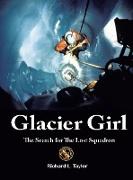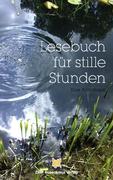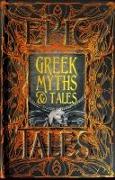Glacier Girl
BücherAngebote / Angebote:
Glacier Girl: The Quest-The Prize is a memoir based on the journals of seven expeditions co-led by Richard Taylor and Pat Epps. Taylor's journals cover eleven years of the search and retrieval of the P-38 Lightning, later called Glacier Girl.
On her way to war in 1942, she and seven other planes in their squadron ran out of gas and crash-landed on the Greenland ice cap. After a two-week wait, all of the pilots and crew were rescued-no one left behind. They then went back to war, and the eight planes were abandoned. Eventually, they became known as the Lost Squadron.
Thirty-nine years later, in 1981, Pat and Richard heard about this aviation event and formed the Greenland Expedition Society (GES). They teamed up with a couple of other pilots and headed north to find the planes. Their ambitious plan was to put fresh gas in the tanks, attach skis, and fly as many of the fighters as they could back to the States. What greater way to store airplanes than in a giant deep freeze?
As it turned out, the planes turned out to be difficult to find. The first four expeditions to the ice cap ended were conspicuous mission failures. In situ lessons in Arctic survival are not offered without startlingly high payments of personal sacrifice. On the upside, some thrilling and harrowing stories of Mother Nature exercising her unlimited fury are shared. The ice cap adage of "shovel or die" takes on new meaning.
It was not until the fifth expedition, using ground-penetrating radar of a discrete frequency, that the planes were finally located. At a glacial rate they had moved more than a mile from their original location. But that wasn't the big problem. The bad news was that they were now encased in solid-blue ice, 260 feet deep in the bowels of the glacier.
To melt a shaft through the ice and down to the planes, the GES, invented and built a system they called the thermal meltdown generator (TMG). In its first field application, at seventy feet deep in the glacier, the melt head lost directional control (gravity) and started heading horizontally. Henceforth, the future TMGs were affectionately called gophers. In 1990, the team returned to the glacier with a new gopher, melted a four-foot diameter shaft down to the B-17 bomber Big Stoop. They then descended down the ice shaft, melted out a hangar area around the bomber and salvaged an array of historical aviation paraphernalia-machine guns, throttle quadrants, instruments, the upper gun turret, and so on. The near impossible was accomplished.
In 1992, now a little more seasoned, and with a few garlands of hard-earned achievement, they returned again with a new super gopher. Their sights were now set on retrieving at least one complete Lockheed, P-38 Lightning fighter plane. The mission started with melting five ice-shafts, closely in a row. The webs between the holes were then melted out to create a four-foot-by-twenty-foot slot in the glacier-260 feet deep. This was the right-sized opening through which they could lift large wings and fuselage sections to the surface. The airplane was then carefully deconstructed, hauled to the surface, and then delivered to the States for reassembly.
It took ten years and two million dollars to put the plane back into flying condition. They called her Glacier Girl. The renovation was performed by Roy Shoffner, a GES partner in the seventh expedition. In 2002, Glacier Girl flew again and was featured in the one-hour History Channel presentation The Hunt for the Lost Squadron.
Glacier Girl now flies and is the feature star attraction in airshows all over the country.
Citius, altius, fortius.
Folgt in ca. 15 Arbeitstagen



